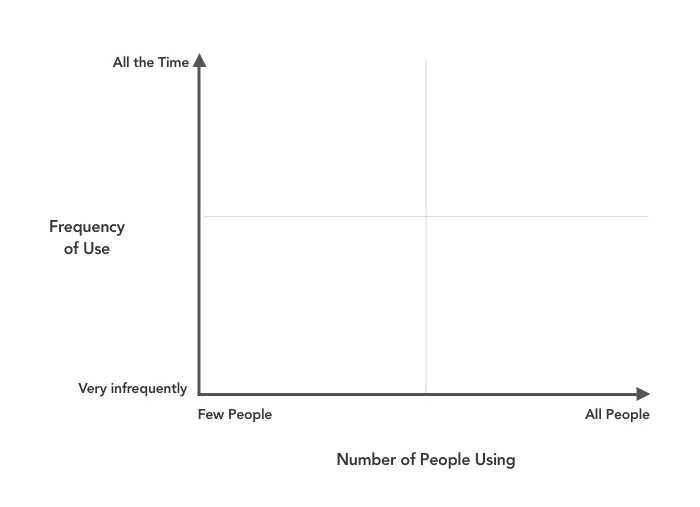SCENE: AFTER HOURS IN A DARK CO-WORKING SPACE
FADE IN:
INT. DARK CO-WORKING SPACE — NIGHT
A solitary figure sits in front of a laptop, the only light source in the dimly lit room. Our protagonist, an innovative entrepreneur, is determined and focused.
Their face illuminated by the screen, the entrepreneur navigates the treacherous waters of the business world. Each keystroke is a testament to their resilience in facing countless challenges.
Tight deadlines, limited funding, investor expectations, and ever-changing regulations are just a few obstacles our main character must overcome. The market’s volatility adds to the chaos.
But the true test lies ahead as our protagonist faces their most formidable adversary yet: a behemoth competitor with seemingly bottomless pockets.
As tension mounts and stakes rise, our entrepreneur must dig deep, summoning every ounce of creativity and cunning to outsmart their well-funded rival.
FADE OUT
Launching a startup is akin to diving headfirst into an action-packed thriller, where each twist and turn brings new challenges, adrenaline-pumping moments, and the constant pursuit of triumph against all odds. In the dynamic world of startups, crafting a compelling narrative isn’t just about telling a story; it’s about creating an experience that resonates with your audience.
Like the art of filmmaking, entrepreneurship demands a compelling narrative and a deep connection with its audience. The magic of cinema captivates us with diverse stories and experiences; startups must also craft narratives that resonate with their target market. While studio blockbusters rely on massive marketing budgets, independent films thrive on the strength of their storytelling and buzz.
Like an indie film, most startups lack the funding to build and promote a product at a “blockbuster” level. So, they need to be scrappy and creative in leveraging the resources they have at their disposal. In both realms, success hinges on telling a story that engages, inspires, and connects with the audience. Without generous investors or a long runway, startups can still reach the next growth stage with the right strategy.
As entrepreneurs, the challenge lies in crafting a strategy that ensures product-market fit and fosters a meaningful connection with customers — just like a major movie producer bringing their vision to life on the silver screen.
SCENE: Navigating the hurdles of the competitive tech landscape
Startups face an uphill battle, navigating the relentless demands of limited resources, tight time constraints, and the imperative for rapid innovation, underscoring the unique challenges they endure amidst the broader business landscape. Building an experienced team within budget constraints while ensuring efficient product development poses significant hurdles.
Overlooking UX design in the early stages of product development can lead to disastrous outcomes, including negative user feedback, low adoption rates, and difficulty attracting investors. The startup failure rate is staggering, highlighting the critical need for strategic UX integration.
Navigating critical growth stages, startups require seasoned expertise to innovate and develop new products effectively. While entry-level staff may offer fresh insights, their limited hands-on experience necessitates significant guidance and strategic direction, demanding valuable time and energy from founders and ultimately hindering the development of meaningful strategies.
SCENE: Design intentionally to gain a competitive advantage and drive growth
Startups can leverage UX design to gain a competitive edge, attract and retain customers, build brand loyalty, and increase market share. By prioritizing intuitive and user-centric design principles, startups can mitigate risks, accelerate learning curves, and position themselves for success.
These principles include:
- An iterative design process that focuses on testing and learning.
- Feature prioritization that drives toward focused, high-value delivery for customers.
- Rapid prototyping to get continual feedback from potential customers.
- A technology approach that prioritizes efficiency and scalability.
Executing against these principles takes intentionality. Startups can start from the ground up by assembling an internal team, which means finding individuals who can design, prototype, code, conduct research, provide strategic insights, and more. Another approach is finding an experienced product design partner who can help companies confidently navigate the complexities of product innovation.
At Design Like You Mean It (DLYMI), we operate like an on-demand film crew, gathering collaborative teams experienced in their respective disciplines to work on projects. With a proven track record and insights from different industries and organizations, we are a special ops team offering extensive UX/UI expertise and years of collective knowledge to propel your company toward its next growth phase.
At DLYMI, we understand startups’ unique challenges and offer collaborative, human-centered design solutions tailored to your needs. We aim to empower startups to create thoughtful digital experiences that drive growth and innovation.
Startups and entrepreneurs are the lifeblood of innovation, job creation, and economic growth. By embracing UX design as a strategic imperative, startups can unlock their full potential, turning their stories into blockbuster successes that resonate with audiences worldwide. It’s time to spotlight the transformative power of UX design in the startup ecosystem.
SCENE: AFTER HOURS IN A DARK CO-WORKING SPACE
FADE IN:
INT. DARK CO-WORKING SPACE — NIGHT
Our protagonist sits hunched over, eyes fixed on the glowing screen. Fatigue is evident as our main character blinks hard, finally tearing their gaze away from the monitor.
After hours of intense research and meticulous review, the brave entrepreneur has an epiphany. The potential cost and efficiency benefits of hiring an “on-demand film crew” will consolidate many skills without the burden of filling each role individually.
Determinedly, the protagonist identifies the perfect partner to bring their vision to life, setting the stage for the venture to become a blockbuster success.
In a moment of triumph, our main character peaks the story’s climax, gaining a crucial competitive edge against the behemoth competitor with bottomless pockets.
In relief, our protagonist closes the laptop, knowing that experienced designers will help accelerate the learning curve.
FADE OUT

